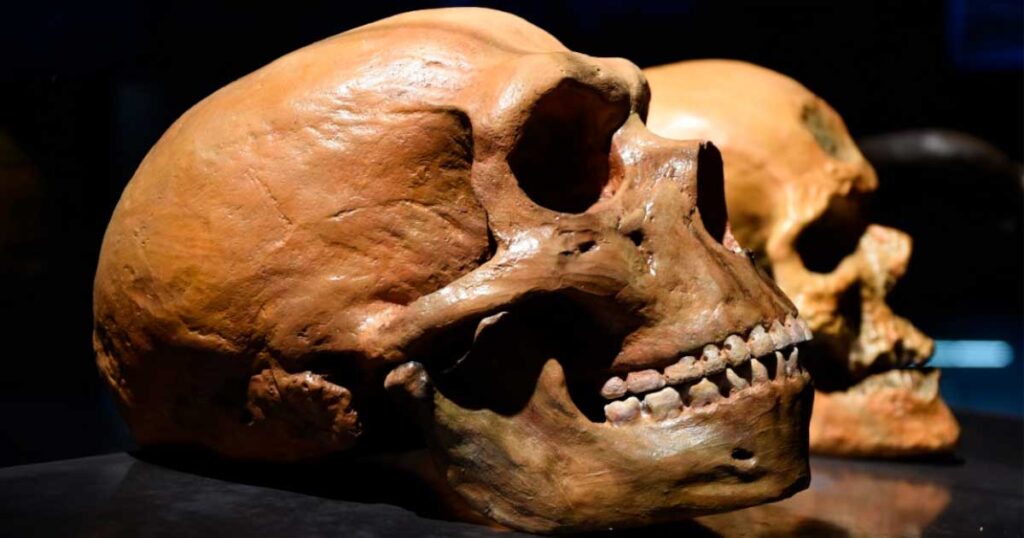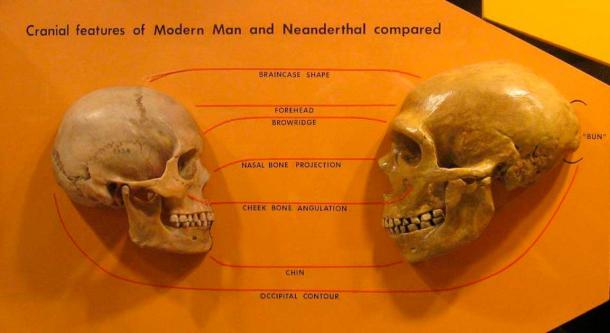
Neanderthals, a subspecies of archaic humans who split from modern humans sometime between 300,000 and 80,000 years ago, have been the subject of a new study. This study has revealed the presence of a single amino acid difference possessed by modern humans that dramatically increased the number of brain cells created, leading to a split in development and providing a cognitive edge for Homo sapiens over their Neanderthal cousins. This is being claimed as the first physical proof modern humans were smarter than Neanderthals.
How Did Modern Human Brains Outcompete Their Older Cousins?
For a long time, scientists and historians have been perplexed about the question – what makes modern humans unique? What sets them apart from other cousins on the evolutionary spectrum? The study, published in Science, shows an increase in brain size and subsequent neuron production during brain development, even though Neanderthals and modern humans had brains of a roughly similar size.

In addition to differences in skull shape and size, modern human brains developed more quickly compared to their Neanderthal cousins (HairyMuseumMatt / CC BY SA 2.0)
“One concrete fact is that wherever Homo sapiens went, they would basically out-compete other species there. It’s a bit weird,” said Professor Laurent Nguyen, of the University of Liège, who was not involved in the latest research. “These guys [Neanderthals] were in Europe a long time before us and would have been adapted to their environment, including pathogens. The big question is why we would be able to out-compete them,” he said, quoted in a Guardian report.
Researchers from the Max Planck Institute of Molecular Cell Biology and Genetics (MPI-CBG) focused on a variation that was identified in Homo sapiens brains. This variation, occurring in our neocortex, boosts the brain progenitor cell counts, which implies that as a species, we made more neurons during the development process, compared to the Neanderthals during theirs, around 130,000 to 40,000 years ago.
“Making more neurons sets the basis for higher cognitive function,” said Wieland Huttner, who led the work at the Max-Planck-Institute of Molecular Cell Biology and Genetics. “We think this is the first compelling evidence that modern humans were cognitively better than Neanderthals.”

Detailed wax figure of Neanderthal prehistoric caveman. Faster development of modern human brains eventually helped Homo sapiens out-compete Neanderthals (EdNurg / AdobeStock)
Comparing Modern Human Brains vs. Neanderthal Brains
For the study, the scientists inserted a Neanderthal brain gene into mice, ferrets, and blobs of lab-grown tissue called organoids. Organoids are tiny, self-organized three-dimensional tissue cultures derived from stem cells, sometimes called ‘mini brain structures’, reports Nature.
They focused on the gene TKTL1 (protein transketolase-like 1), which is heavily involved in the neuronal production in a developing brain. The Neanderthal version of this same gene differs by one letter from the modern human version. In modern humans, TKTL1 contains an arginine at the sequence position, whereas in the Neanderthals, it is the related amino acid lysine.
“We found that with the Neanderthal-type of amino acid in TKTL1, fewer basal radial glial cells were produced than with the modern human-type and, as a consequence, also fewer neurons. This shows us that even though we do not know how many neurons the Neanderthal brain had, we can assume that modern humans have more neurons in the frontal lobe of the brain, where TKTL1 activity is highest, than Neanderthals,” concluded Anneline Pison, first author of the study.
From these experiments, it was determined that the Neanderthal version of the gene created neurons slowly during the brain’s cortex development. This slower pace could be a huge factor that explains the superior cognitive abilities of modern humans. It wouldn’t be farfetched to say that it was all in the mind!
Therefore, if the production of neurons in the neocortex is greater during fetal development, it can be speculated that modern humans cognitive abilities associated with the frontal lobe were promoted, leading to better tools, weaponry, language, art, symbolism, and ultimately, smarter brains. Moving forward, Pinson hopes to understand the mechanisms through which TKTKL1 drives the birth of brain cells.